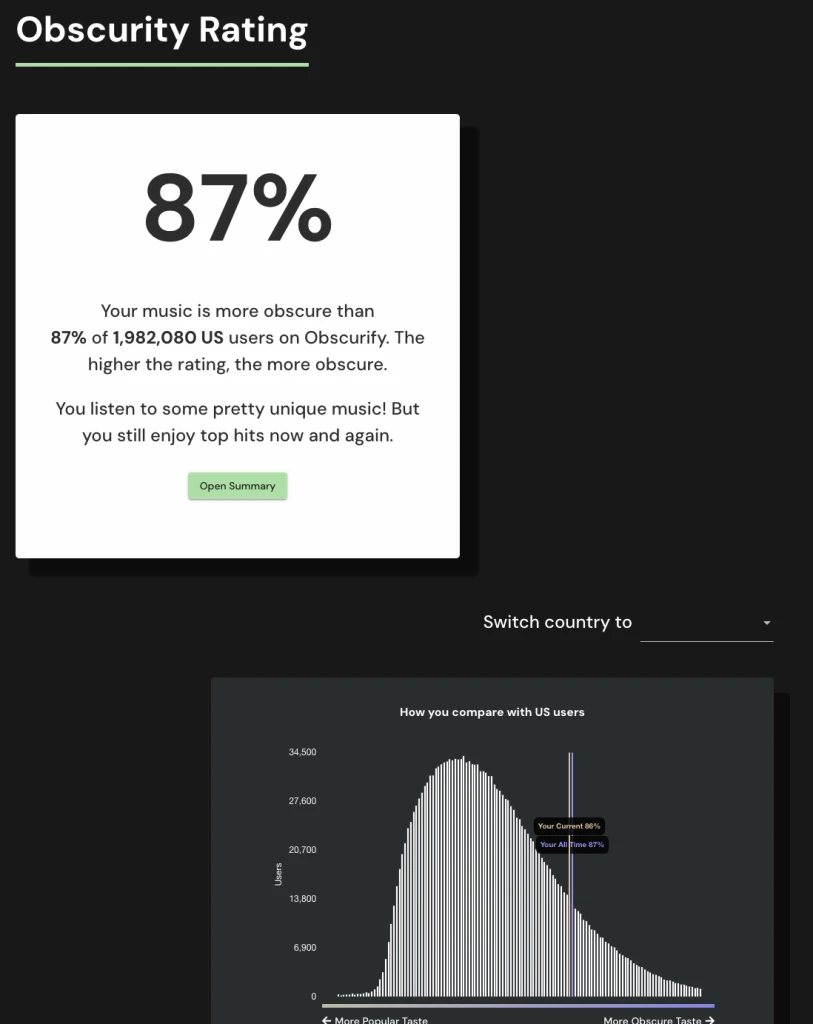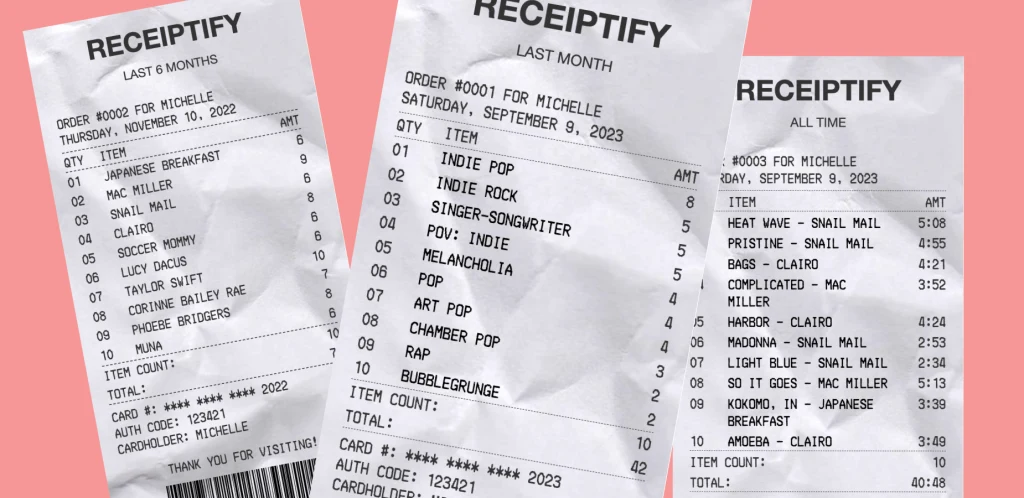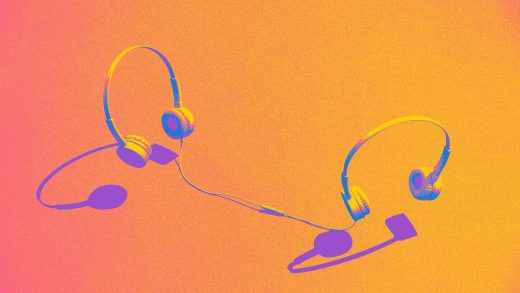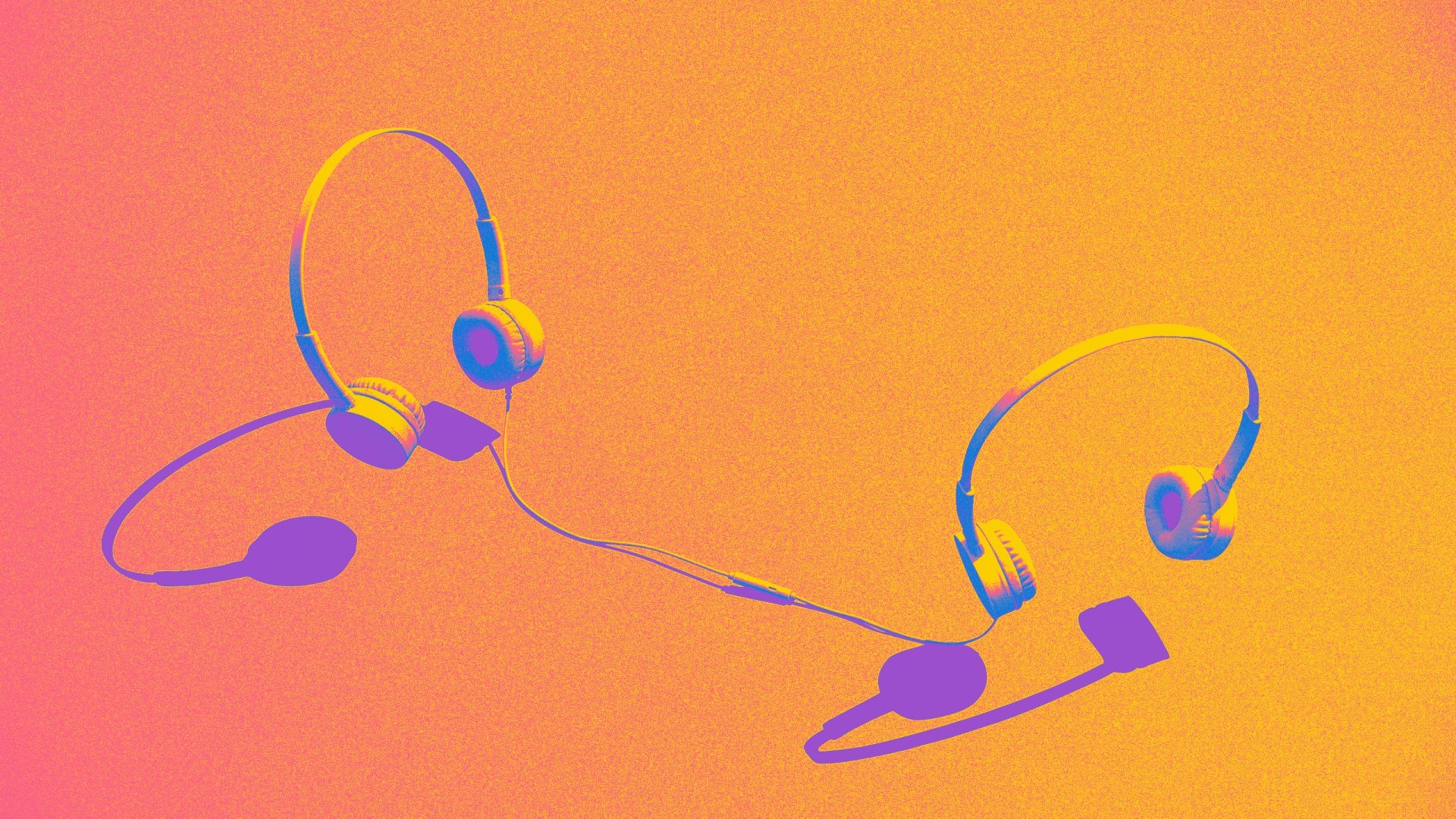For Gen Z, music is its own social media
For Gen Z, music is its own social media
From Spotify Wrapped to apps that turn your listening habits into receipts, music taste is now a new kind of social currency.
Sharing music used to be a lot harder (remember burning CDs?). In the age of streaming, though, sharing music is as easy as sending a text—and it’s implicit to the way Gen Z listens to music.
Gone are the days of solo listening, where you could indulge in guilty pleasures without fear of judgment. Instead, we’ve entered the era of social listening, where streaming services partner with social media platforms for easy sharing, and where startups repackage listening statistics into TikTok-able rundowns. It’s all part of a shift away from isolated listening, and towards an era of music sharing that mimics social media itself.

Music goes social
Though TikTok has increasingly become the epicenter of music sharing (a recent study found 45% of 18-24 year olds use social media for music discovery), a web of apps and experiences have popped up to turn music into social fodder.
Spotify is arguably the biggest and most influential streaming platform to lean into social—it has “followers” akin to Instagram, and users can choose to turn on public Friend Activity, sending out their listening habits to their followers song by song. But it has also spawned a secondary market of web apps that help listeners broadcast their taste to their friends.
With a Spotify log-in, online platforms can get access to a user’s extensive API data and use it to repackage listening statistics into a shareable entity. Michelle Liu created Receiptify, a web service that turns a user’s APIs into a receipt-style listing, for a college club application. She never expected it to go viral.
“I wrapped it up at like 12:00 AM, and then the next morning my website was crashing because there were so many people using it,” Liu says. “I had to upgrade the servers.”
Nirmal Patel, UX designer of Obscurify, recounts a similar story. His platform, which allows users to see how obscure their music taste is compared to the average listener, blew up on TikTok.
“Especially with TikTok, it’s so easy to share music,” Patel says. “The music streaming services don’t do it as well as TikTok does it.”
By now, Liu and Patel’s programs retain a steady flow of users, enough that they can place ads on the platform to monetize engagement. Social listening isn’t just a method of consumption; it’s a new market.
Matt Daniels had his own API analyzer, “How Bad is Your Spotify?,” go viral back in 2020, with traffic spiking around 7 million views. The platform, which uses an AI chatbot to effectively roast a user’s taste, gained traction for its snarky voice.
“There’s this premise around your music speaking to your identity and your worldview,” Daniels says. “There’s the Spotify Wrapped version, which is kind of like a humble brag, but also a little bit self-deprecating. Our project was ultra self-deprecating.”

Music as an identity
Natasa Soltic, senior product director at Spotify says the streaming platform doesn’t consider itself social media, but acknowledges that social features play an increasingly important role in the Spotify experience. “While we do not consider Spotify a form of social media itself, we do believe that music and audio help people connect with their friends and family in social ways,” she says.
Spotify Wrapped, the colorful data analysis that peppers Instagram feeds every December, is perhaps the platform’s most obvious example of this. Charles Owens, a student at Toronto Metropolitan University, believes that features like Spotify Wrapped are a yet another way to signal to others how you want to be perceived.
“There have been times where I don’t share my Spotify Wrapped because … it’s not necessarily music that I attach to my identity,” Owens says.
For Owens, this public-facing aspect of Spotify listening dampens its authenticity: “I think it strips away some intimacy and makes it a more easy, public spectacle, which I think does impact the way that some people structure their music listening.”
Soltic emphasizes that social listening is just one of Spotify’s numerous uses. “One of the wonderful things about our platform is that there’s no single Spotify experience,” Soltic says. “We want to support listeners to express their individuality, and sharing their music taste ubiquitously across different platforms like Instagram, Snapchat or iMessage is one of the ways in which we do that.”
Spotify realizes that today, users aren’t just sharing playlists; they’re sharing statistics, obscurity scores, even self-roasts. They’re markers of identity, articulated through music. That is the market that these music-sharers are capitalizing on, be it through mainstays like Spotify or micro-companies like Obscurify. Gen Z increasingly wants to share their taste with the masses. The internet, it seems, is their stage.
ABOUT THE AUTHOR
Fast Company
(10)



